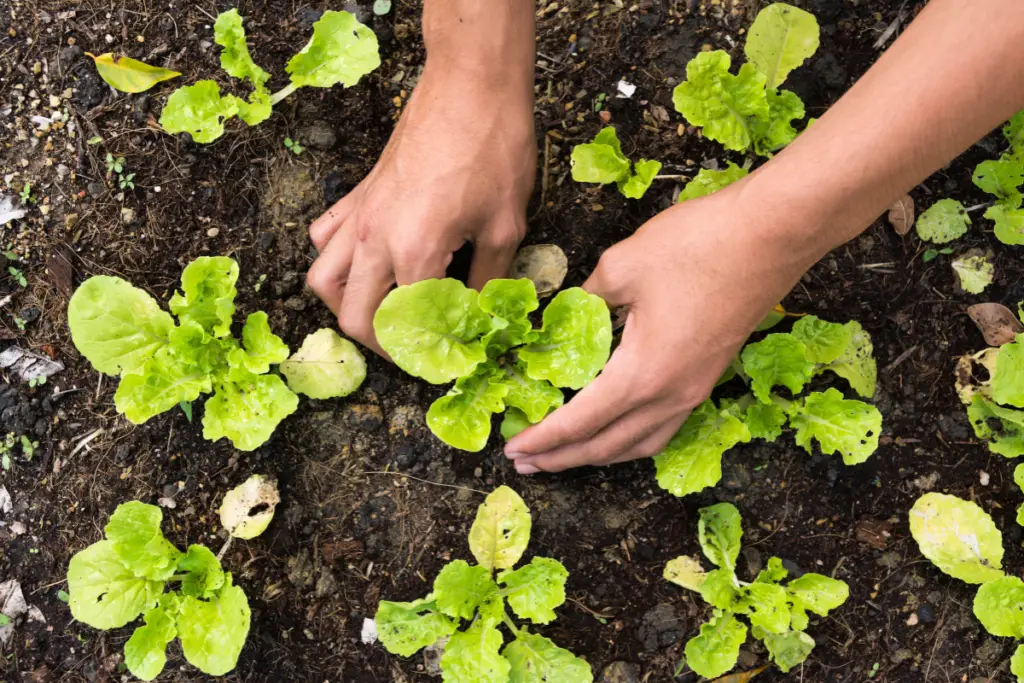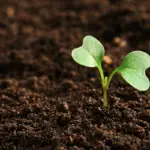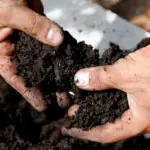Loamy soil is a versatile and highly desirable soil type for gardening and agriculture.
It is a mixture of sand, silt, and clay, and it is considered the ideal type of soil for growing vegetables.
The texture of this soil is porous and can hold moisture while also allowing for proper drainage. It has the perfect balance of water retention and aeration for plant roots to grow and thrive.
Many vegetable crops are suitable to be grown in loamy soil including tomatoes, cabbages, peppers, and cucumbers.
These vegetables thrive in loamy soil because they provide the necessary nutrients and water retention that they need to grow.
Loamy soil also allows for good aeration and drainage, which helps to prevent root rot and other diseases that can harm plants.
In this article, we will explore the different types of vegetables that can be grown in loamy soil.
We will provide an overview of the characteristics of loamy soil that make it ideal for plant growth, and we will discuss the benefits of gardening with loamy soil.
Whether you are an experienced gardener or just starting out, this article will provide you with the information you need to grow healthy and productive vegetable crops in loamy soil.

Table of Contents
Understanding Loamy Soil
Loamy soil is a type of soil that is made up of a mixture of sand, silt, and clay.
It is considered the ideal type of soil for growing vegetables due to its ability to retain moisture and nutrients while also allowing for proper drainage.
The texture of loamy soil is porous, which allows it to hold moisture while also allowing for air circulation.
This balance of water retention and aeration is essential for plant roots to grow and thrive.
Loamy soil is also rich in organic matter, which provides the necessary nutrients for plants to grow.
It has a neutral pH level, which means that it is not too acidic or alkaline. This type of soil is easy to work with and is suitable for a wide range of vegetables.
It is important to note that loamy soil can vary in composition depending on the location and climate.
For instance, loamy soil in a dry climate may have more sand and less clay, while loamy soil in a wet climate may have more clay and less sand.
Vegetables Thriving in Loamy Soil
Loamy soil is a versatile and highly desirable soil type for gardening and agriculture. It has the perfect balance of water retention and aeration for plant roots to grow and thrive.
Here are some vegetables that thrive in loamy soil:
Root Vegetables
Root vegetables are those that grow underground, such as carrots, radishes, and potatoes.
These vegetables require well-drained soil with good aeration, which makes loamy soil a perfect fit.
The loamy soil texture allows the roots to easily penetrate the soil and absorb nutrients.
Leafy Vegetables
Leafy vegetables, such as lettuce, spinach, and kale, also thrive in loamy soil.
The porous texture of loamy soil allows for proper drainage, which is important for leafy vegetables since they require consistent moisture but cannot tolerate standing water.
The high organic matter content of loamy soil also helps to retain moisture, ensuring that leafy vegetables receive the water they need to grow.
Fruiting Vegetables
Fruiting vegetables, such as tomatoes, peppers, and cucumbers, also do well in loamy soil.
These vegetables require soil that is rich in nutrients and well-drained, which makes loamy soil an ideal choice.
The texture of loamy soil allows for proper drainage, while the high organic matter content provides the nutrients that these vegetables need to produce healthy fruit.
Benefits of Loamy Soil for Vegetables
Loamy soil is considered to be the best type of soil for growing vegetables due to its numerous benefits.
Here are some of the benefits of loamy soil for vegetable growth:
- Nutrient-rich: Loamy soil is rich in nutrients, making it an ideal growing medium for vegetables. It contains a balanced mixture of sand, silt, and clay, which allows for good drainage and aeration, while also retaining enough moisture to keep plants healthy.
- Good soil structure: Loamy soil has a good soil structure, which means that it is easy for plant roots to penetrate and grow. This helps plants to absorb nutrients and water more efficiently, resulting in healthier and more productive plants.
- Neutral pH level: Loamy soil has a neutral pH level, which means that it is not too acidic or alkaline. This allows for a wide variety of vegetables to thrive, as different plants have different pH requirements.
- Easy to work with: Loamy soil is easy to work with, making it a great choice for gardeners of all levels of experience. It is easy to till, plant, and maintain, and requires minimal effort to keep in good condition.
- Versatile: Loamy soil is versatile and can be used to grow a wide variety of vegetables, including tomatoes, peppers, cucumbers, lettuce, carrots, and more. It is also suitable for growing herbs and other plants.
Preparing Loamy Soil for Vegetable Cultivation
When it comes to growing vegetables, loamy soil is considered the ideal type of soil due to its perfect balance of water retention and aeration for plant roots to grow and thrive.
Here are a few steps to prepare loamy soil for vegetable cultivation:
- Test the Soil: Before preparing the soil, it’s important to test its pH level and nutrient content. This can be done by using a soil testing kit or sending a sample of the soil to a lab for analysis. Once the results are obtained, the soil can be amended accordingly.
- Add Organic Matter: Loamy soil can benefit from the addition of organic matter such as compost, manure, or leaf mold. These materials can improve soil structure, increase nutrient content, and promote healthy microbial activity.
- Till the Soil: Tilling the soil can help break up any clumps and improve soil structure. However, it’s important not to over-till the soil as this can damage its structure and reduce its ability to retain water.
- Mulch the Soil: Adding a layer of organic mulch such as straw, leaves, or grass clippings can help regulate soil temperature, retain moisture, and suppress weed growth.
- Water the Soil: Once the soil has been prepared, it’s important to water it thoroughly to ensure that it’s evenly moist. This can help promote healthy root growth and prevent water stress in plants.
By following these steps, gardeners can prepare loamy soil for vegetable cultivation and create an ideal environment for their plants to grow and thrive.
Maintaining Loamy Soil for Vegetable Growth
Loamy soil is a perfect medium for growing vegetables.
It is a balanced mixture of sand, silt, and clay that provides excellent drainage and aeration for plant roots to grow and thrive.
Here are some tips for maintaining loamy soil to ensure healthy vegetable growth:
1. Test the Soil
Before planting, it is essential to test the soil to determine its pH level and nutrient content. A soil test will help you identify any deficiencies and adjust the soil accordingly.
Most vegetables prefer a slightly acidic soil with a pH range of 6.0 to 6.5.
2. Add Organic Matter
Loamy soil already contains a good amount of organic matter, but adding more can help improve its fertility and structure.
Organic matter such as compost, manure, or leaf mold can be added to the soil to increase its nutrient content and water-holding capacity.
3. Mulch the Soil
Mulching the soil with organic matter can help regulate soil temperature, conserve moisture, and suppress weed growth.
Organic mulches such as straw, leaves, or grass clippings can be applied to the soil surface to a depth of 2 to 3 inches.
4. Rotate Crops
Crop rotation is an essential practice in vegetable gardening that helps prevent soil-borne diseases and pests.
It involves planting different vegetable families in different areas of the garden each year. This practice also helps maintain soil fertility by alternating nutrient demands.
5. Avoid Compaction
Loamy soil can become compacted over time, which can impede root growth and drainage.
Avoid walking on the soil when it is wet and use raised beds or pathways to prevent soil compaction.
By following these tips, gardeners can maintain healthy loamy soil for growing a variety of vegetables.
Disadvantages of Using Loamy Soil?
While loamy soil is considered the ideal type of soil for growing vegetables, there are still some challenges that gardeners may face.
Here are some common challenges and solutions to help ensure a successful harvest:
Soil Compaction
If the soil becomes compacted, it can lead to poor drainage and stunted plant growth.
This can happen from foot traffic, heavy machinery, or even from heavy rains.
Solution: Adding organic matter such as compost or aged manure can help improve soil structure and prevent compaction. Regularly aerating the soil with a garden fork or tiller can also help.
Waterlogging
Loamy soil has good drainage, but if it becomes too saturated, it can lead to waterlogging and root rot.
Solution: Ensure proper drainage by planting in raised beds or adding drainage tiles. Avoid overwatering and consider using drought-resistant plants.
Nutrient Depletion
While loamy soil is rich in nutrients, intensive gardening can deplete the soil of essential nutrients over time.
Solution: Regularly add organic matter such as compost or aged manure to replenish nutrients. Consider rotating crops to prevent depletion of specific nutrients.
Pests and Diseases
Pests and diseases can quickly spread in a vegetable garden, leading to damage or loss of crops.
Solution: Practice good garden hygiene by removing dead plant material and regularly weeding.
Consider using natural pest control methods such as companion planting or introducing beneficial insects. If necessary, use organic pesticides or fungicides.
Conclusion
In conclusion, loamy soil is the preferred soil type for growing vegetables due to its ideal texture and nutrient content.
Vegetables that thrive in loamy soil include root crops such as yams, potatoes, carrots, beets, and radishes.
Other vegetables that grow well in loamy soil include tomatoes, peppers, cucumbers, and beans.
Loamy soil provides excellent drainage and aeration, preventing waterlogging and root rot in vegetables.
Its moisture retention and nutrient availability also benefit the growth and development of vegetables.
Additionally, the organic matter in loamy soil provides additional nutrients to the plants.
It is important to note that while loamy soil is ideal for growing vegetables, it is still necessary to monitor the soil’s pH levels and nutrient content.
Regular soil testing and amendment can help ensure optimal growing conditions for vegetables.
- How to Dry Basil Leaves: A Professional Guide
- Is an Avocado a Fruit or Vegetable? Simple Answer and Explanation
- Does Pineapple Have Seeds? Exploring the Anatomy of Pineapples
- Blooming Through Winter: Can I Grow Vegetables Indoors in the Winter?
- What Can You Grow in a Greenhouse All Year Round: A Guide to Year-Round Greenhouse Gardening
- Are Blueberries Blue? Debunking the Myth of Their Color
















